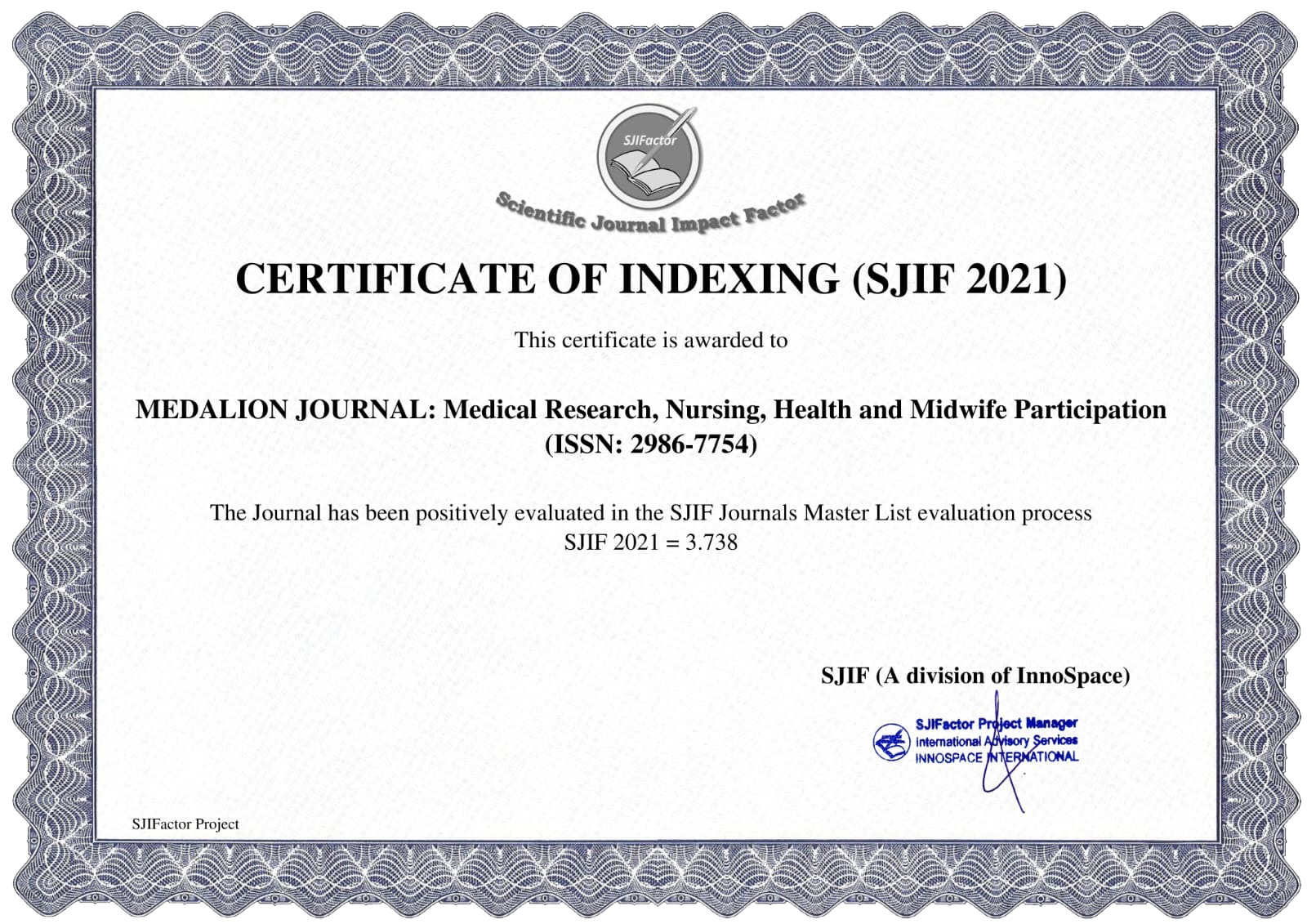ANTIBACTERIAL EFFECTIVENESS TEST OF KERSEN LEAVES (MUNTINGIA CALABURAL L) ON ESCHERICHIA COLI
Main Article Content
Sarita Ardila
Abdul Wahab
Aditya Candra
The plant known as kersen leaf (Muntingia calabura L) is quite widespread in tropical regions and is frequently used by the local population as a traditional antibacterial because it has a number of pharmacological properties, one of which is the ability to kill Escherichia coli germs. The purpose of this study is to ascertain whether cherry leaf extract (Muntingia calabural L) inhibits Escherichia coli growth and whether cherry leaf extract (Muntingia calabural L) has an antibacterial impact on Escherichia coli. This study tested the ethanol extract of cherry leaves (Muntingia calabural L) against Escherichia coli bacteria using an experimental laboratory method. The collected data were examined using nonparametric statistical analysis known as ANOVA. According to the results of the phytochemical research, Kersen leaves contain tannins and saponins but no flavonoids. Escherichia coli antibacterial studies revealed that kersen leaf extract has a growth-inhibiting impact on these germs. As the concentration of the extract increased, a larger inhibition zone formed. Kersen leaves contain tannins and saponins, and the extract from these leaves can be used to treat bacteria such as Escherichia coli.
Supriani S, Nurwijayanti N. Test of Phytochemical Content and Antibacterial Activity of Dayak Onion Ethanolic Extract against Staphylococcus Aureus Bacteria in Mueller Hinton Agar Media. J Pharmaceuticals. 2021;10(1).
Prawira YM, Sarwiyono S, Surjowardojo P. Inhibition of Kersen Leaf Dekok (Muntingia calabura L.) Against the Growth of Staphylococcus Aureus Bacteria that Causes Mastic Disease in Dairy Cattle. J Student Faculty of Animal Husbandry, Brawijaya University, Malang. 2013;
Bamasri TH. Muntingia Calabura Cherry Leaves as Antibacterial. J Nurse Researcher Prof. 2021;3(2).
Handoko DA, Setyawati T, Asrinawati AN. Antibacterial Effectiveness Test of Cherry Leaf Extract (Muntigia calabura L.) against Escherichia coli Bacteria. Med Tadulako J Ilm Kedokt. 2019;6(1).
Kumar S, Pandey AK. Chemistry and biological activities of flavonoids: an overview. Sci World J. 2013;2013.
Salminen JP, Karonen M. Chemical ecology of tannins and other phenolics: We need a change in approach. Funct Eco. 2011;25(2).
Desiyana LS, Vonna A, Hafsyari R, Illian DN, Correspondent P. In Vitro Mucolytic Activity Test of Cherry Leaves (Muntingia calabura L.). Indones J Bioleuser. 2021;5(3).
Vonna A, Desiyana LS, Hafsyari R, Illian DN. Phytochemical Analysis and Characteristics of Kersen (Muntingia calabura L.) Leaf Ethanol Extract. Indones J Bioleuser. 2021;5(1).
Puspitasari AD, Prayogo LS. Effect of Boiling Time on Total Flavonoid Content of Cherry Leaves (Muntingia calabura). Inov Tech Kim. 2016;1(2).
Morales G, Sierra P, Mancilla A, Paredes A, Loyola LA, Gallardo O, et al. Secondary metabolites from four medicinal plants from northern Chile: Antimicrobial activity and biotoxicity against Artemia salina. J Chil Chem Soc. 2003;48(2).
Arum Y, Supartono, Supartono. Sudarmin S. Isolation and Antimicrobial Test of Cherry Leaf Extract (Muntingia calabura). J MIPA Unnes. 2012;35(2).









